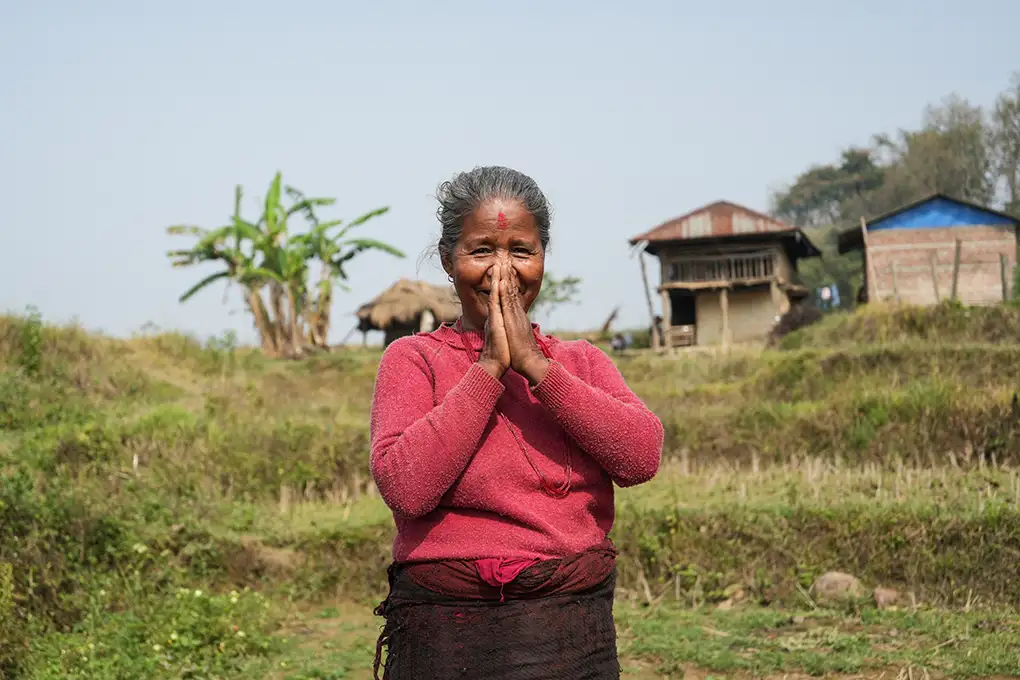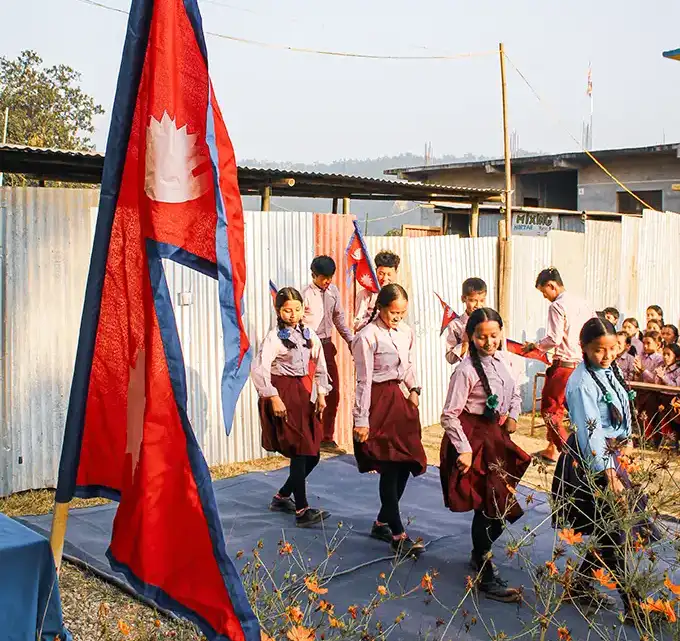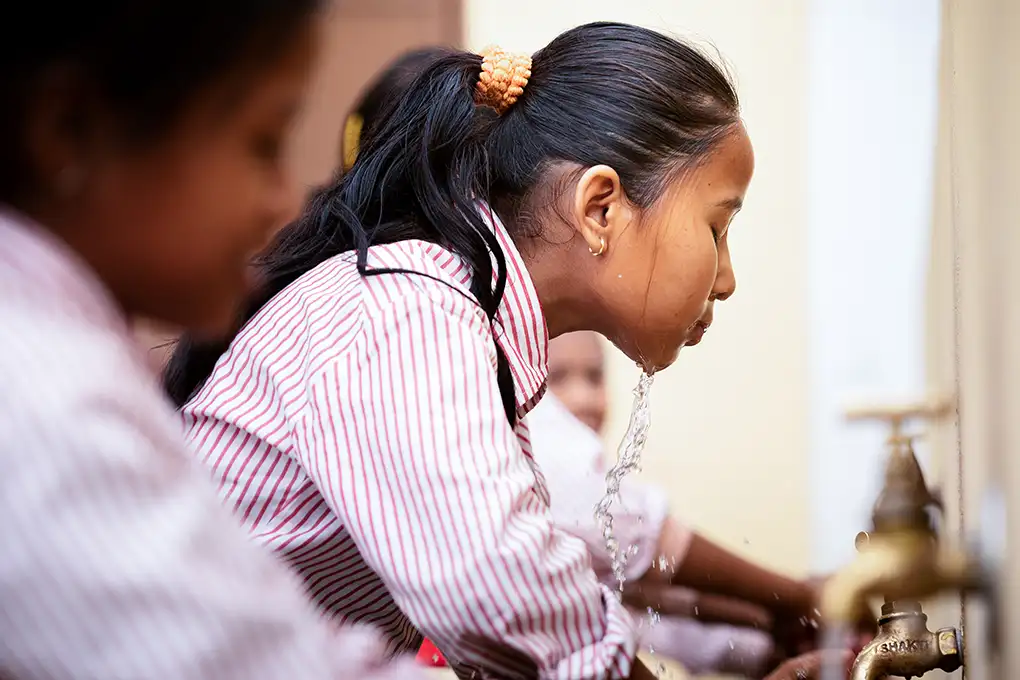ADDRESSING WATER SCARCITY IN NEPAL
BEHIND THE BHANU WATER WELL
MAY 24, 2024
All Hands and Hearts (AHAH) spent over five months in Hariharpurgadhi, Nepal, learning, listening and integrating over time to understand the needs of the local community. AHAH’s initial scope of work in Hariharpurgadhi involved rebuilding Shree Bhanubhakta School, which serves 279 students, following damage from the country’s devastating earthquakes in 2015.
Over time, AHAH was exposed to a deeper challenge: a growing water scarcity issue pressuring the community. It became clear that a straightforward school reconstruction would not be enough.
TOO MUCH WATER, TOO LITTLE WATER
The municipality of Hariharpurgadhi experiences four months of torrential rainfall from June through September. This is beneficial in the region’s traditional practice of paddy harvesting, where the surplus of water is necessary for rice growth and cultivation. The community further uses this surplus to satisfy all of their water needs, as local streams are tapped using an extensive network of pipes.
Just weeks after monsoon season ends, however, the water level in local streams begins its retreat.
Three months later, only a small trickle flows from the stream. The situation worsens by mid-spring, with nearly all water sources in the region running dry. The only solution left is found downstream in Jaruwa, where community members have to walk long distances to a water source to manually retrieve water to fulfill their needs. This same condition persists until the onset of the monsoon season the following June.
A DISPROPORTIONATE IMPACT ON WOMEN
The entire community is sorely affected by the scarcity of water, however, the burden generally falls upon the women of Hariharpurgadhi. Here, women are responsible for household chores and caring for livestock, essential tasks that require them to travel by foot to fetch large amounts of water. In the summertime, rising temperatures and wind speeds dry the streambeds further, requiring women to travel even farther downstream to find water.

POLITICAL GRAPPLING FOR A WATER WELL
Hariharpurgadhi Rural Municipality, the local government, recognizes the region’s water scarcity issue and allocates yearly funds in its budget to provide safe drinking water to the community. The selection of water well projects for budget allocation is primarily based on the community’s population and, more significantly, its political influence. At times, even the larger communities may not receive budget allocations for water well projects due to political disagreements between community members and the rural municipality chair.
IMPACT ON THE COMMUNITY SCHOOL
The lack of access to water severely compromises the students’ educational experience in numerous ways. Shree Bhanubhakta School’s reservoir tank holds a 10,000-liter capacity, which is fed by a water pipe sourced from the community stream. As soon as the calendar marks the mid-autumn season, the volume of water gets reduced. By spring, severe water scarcity arises due to two main reasons: first, a significant reduction in stream water flow, and second, heightened competition for the limited water from the Hariharpurgadhi community, whose needs triumph over the school’s needs.
When water no longer flows to the school, the burden of fetching water falls mainly upon Kiran, the school assistant, and the students. Together, they walk 500 meters downstream everyday with two aluminum pitchers and cold drink bottles to collect water to bring back to the school. This amount of water is barely enough to quench thirst, let alone satisfy their sanitation needs. The school’s Water, Sanitation and Hygiene (WASH) utilities are severely compromised due to this lack of available water.

THE RESPONSE, A NEW WATER WELL
With each of these factors in consideration, AHAH responded by launching a community-driven project to construct a new water well for Shree Bhanubhakta School. Three local contractors with well construction experience were hired to dig approximately 21 feet to reach the groundwater table, where parents and other community members joined them in dig efforts. The well, situated 300 meters downstream from the school, has a capacity of providing around 2,700 liters of water daily, which is pumped directly to the school’s reserve water tank.
The system guarantees a continuous fresh water supply to the school throughout the year. While primarily serving the school, the well also benefits 20 households in the community by freeing up the water source, now that the school no longer relies on it.
The next step was to install a biosand water filtration system for the school, in collaboration with our local partner Relief Nepal. The filtration system draws water directly from the new reserve tank and filters it into potable drinking water accessible through taps. Biosand water filtration systems use layers of sand and gravel to purify source water through biological and physical processes, offering a low-cost, low-maintenance solution to secure access to clean water.

This comprehensive solution addresses the immediate water needs of Shree Bhanubhakta School and enhances the overall water security for the surrounding community. By providing a sustainable water source and ensuring its purity through the biosand filtration system, AHAH and the local community developed a resilient solution that benefits the students and local households.
Our programs will remain committed to long-term, community-driven impact, empowering the people we work with with the resources they need for a resilient, more sustainable future.












